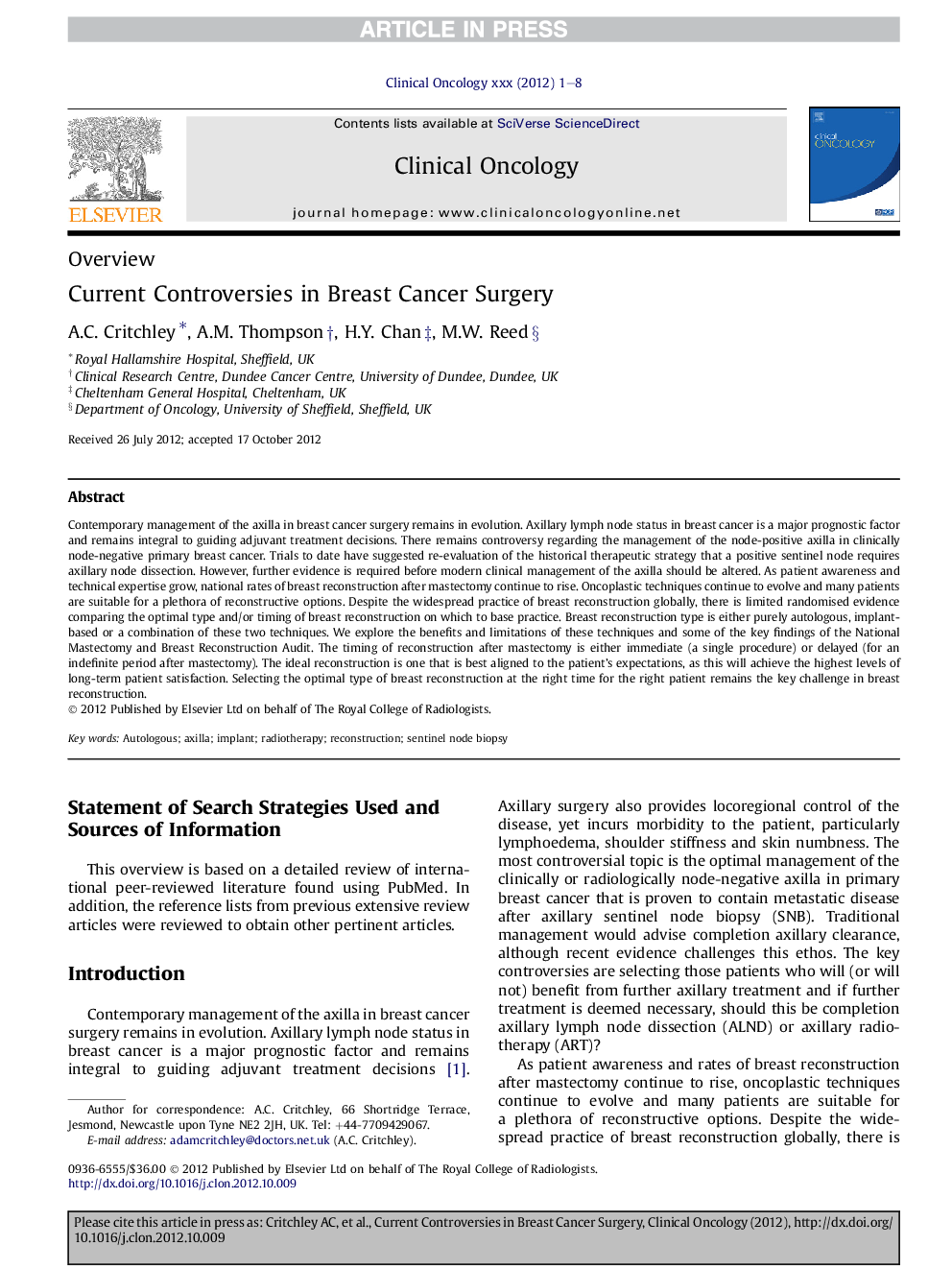| Article ID | Journal | Published Year | Pages | File Type |
|---|---|---|---|---|
| 5698489 | Clinical Oncology | 2013 | 8 Pages |
Abstract
Contemporary management of the axilla in breast cancer surgery remains in evolution. Axillary lymph node status in breast cancer is a major prognostic factor and remains integral to guiding adjuvant treatment decisions. There remains controversy regarding the management of the node-positive axilla in clinically node-negative primary breast cancer. Trials to date have suggested re-evaluation of the historical therapeutic strategy that a positive sentinel node requires axillary node dissection. However, further evidence is required before modern clinical management of the axilla should be altered. As patient awareness and technical expertise grow, national rates of breast reconstruction after mastectomy continue to rise. Oncoplastic techniques continue to evolve and many patients are suitable for a plethora of reconstructive options. Despite the widespread practice of breast reconstruction globally, there is limited randomised evidence comparing the optimal type and/or timing of breast reconstruction on which to base practice. Breast reconstruction type is either purely autologous, implant-based or a combination of these two techniques. We explore the benefits and limitations of these techniques and some of the key findings of the National Mastectomy and Breast Reconstruction Audit. The timing of reconstruction after mastectomy is either immediate (a single procedure) or delayed (for an indefinite period after mastectomy). The ideal reconstruction is one that is best aligned to the patient's expectations, as this will achieve the highest levels of long-term patient satisfaction. Selecting the optimal type of breast reconstruction at the right time for the right patient remains the key challenge in breast reconstruction.
Related Topics
Health Sciences
Medicine and Dentistry
Oncology
Authors
A.C. Critchley, A.M. Thompson, H.Y. Chan, M.W. Reed,
